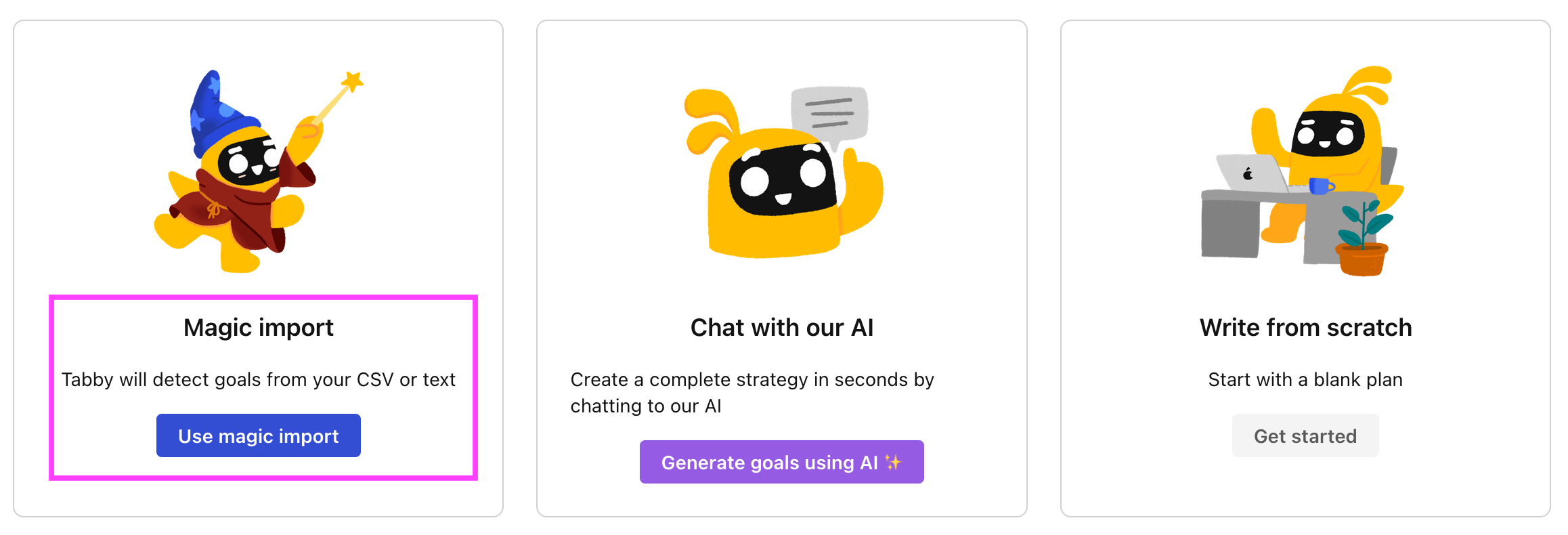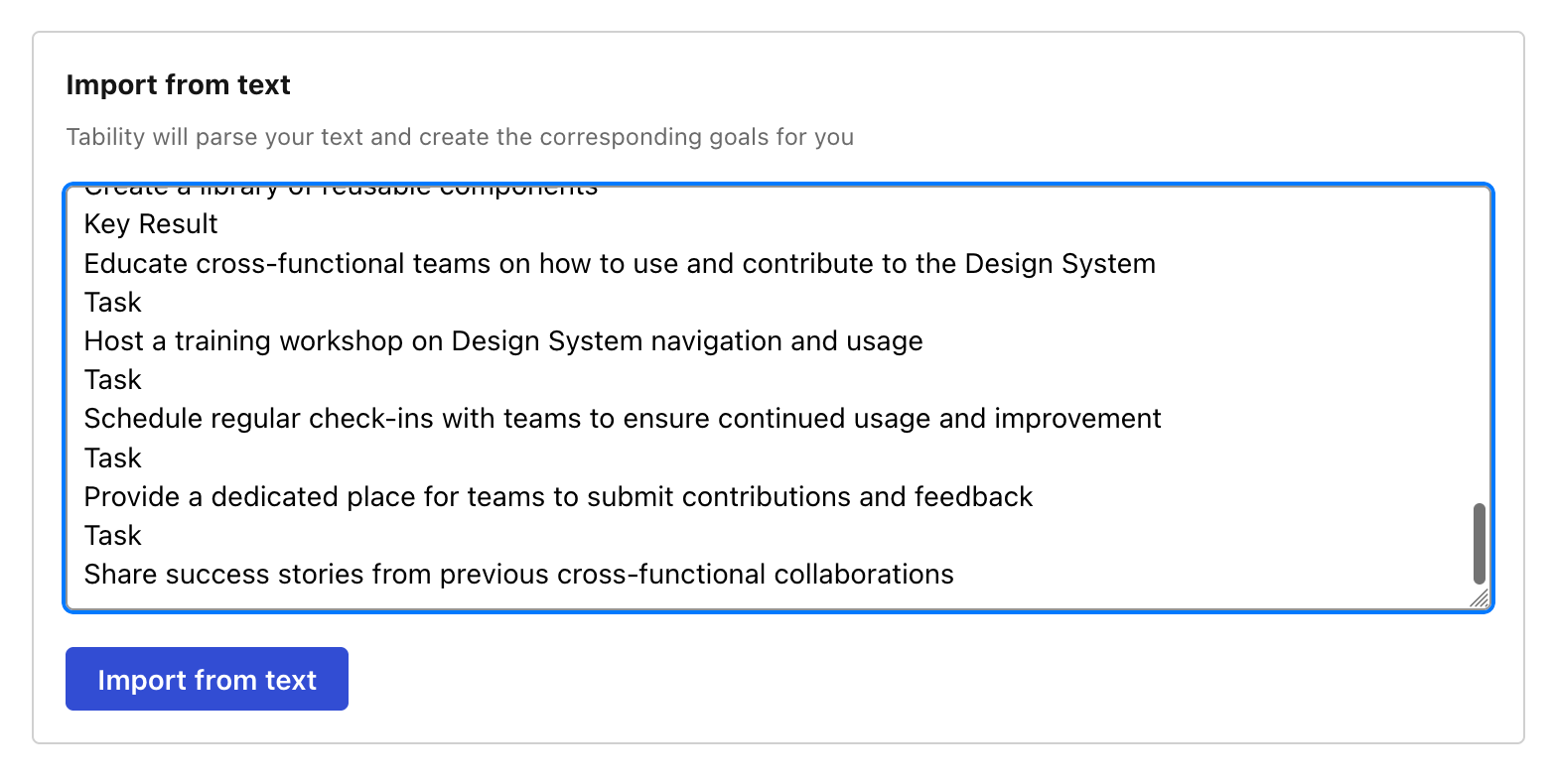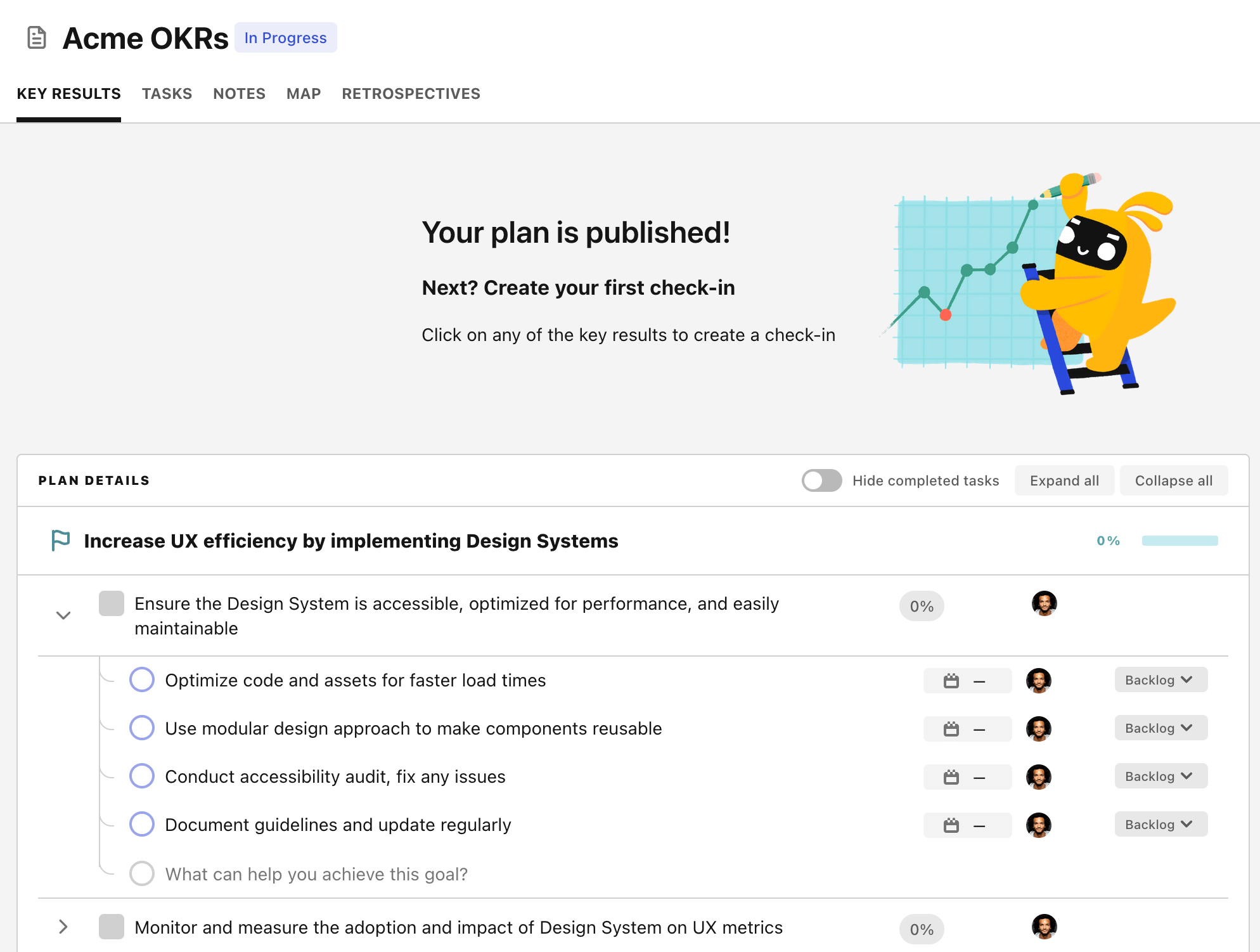OKR template to achieve proficiency in understanding trading view indicators
Your OKR template
Another objective would be to demonstrate understanding by creating a trading strategy using these common indicators. To achieve this, the individual would need to research common trading strategies, visually represent their strategy's effectiveness, and create a unique trading strategy.
The third objective involves studying and summarizing 10 different trading view indicators weekly. To accomplish this, the individual will need to select 10 specific trading view indicators to study each week, dedicate ample time to learning each one, and then provide clear summaries for each.
Overall, this OKR demands a thorough understanding and analysis of trading view indicators, the development of a unique trading strategy using these indicators, and the broad study and summarization of multiple indicators on a weekly basis.
ObjectiveAchieve proficiency in understanding trading view indicators
KRIdentify and provide an in-depth analysis of the top 5 most commonly used indicators
Craft a comprehensive report on the findings
Research and list the top 5 most commonly used indicators
Perform an in-depth analysis of each indicator
KRIllustrate comprehension through generating a trading strategy using these common indicators
Research common indicators used in trading strategies
Illustrate the strategy's effectiveness through comprehensible visual representation
Develop a unique trading strategy utilizing these indicators
KRStudy and summarize 10 different trading view indicators weekly
Create concise summaries for each indicator weekly
Select 10 trading view indicators to study
Dedicate time weekly to learn each indicator
How to edit and track OKRs with Tability
You'll probably want to edit the examples in this post, and Tability is the perfect tool for it.
Tability is an AI-powered platform that helps teams set better goals, monitor execution, and get help to achieve their objectives faster.
With Tability you can:
- Use AI to draft a complete set of OKRs in seconds
- Connect your OKRs and team goals to your project
- Automate reporting with integrations and built-in dashboard
Instead of having to copy the content of the OKR examples in a doc or spreadsheet, you can use Tability’s magic importer to start using any of the examples in this page.
The import process can be done in seconds, allowing you to edit OKRs directly in a platform that knows how to manage and track goals.
Step 1. Sign up for a free Tability account
Go tohttps://tability.app/signup and create your account (it's free!)
Step 2. Create a plan
Follow the steps after your onboarding to create your first plan, you should get to a page that looks like the picture below.

Step 3. Use the magic importer
Click on Use magic import to open up the Magic Import modal.
Now, go back to the OKR examples, and click on Copy on the example that you’d like to use.

Paste the content in the text import section. Don’t worry about the formatting, Tability’s AI will be able to parse it!

Now, just click on Import from text and let the magic happen.

Once your example is in the plan editor, you will be able to:
- Edit the objectives, key results, and tasks
- Click on the target 0 → 100% to set better target
- Use the tips and the AI to refine your goals
Step 4. Publish your plan
Once you’re done editing, you can publish your plan to switch to the goal-tracking mode.

From there you will have access to all the features that will help you and your team save hours with OKR reporting.
- 10+ built-in dashboards to visualise progress on your goals
- Weekly reminders, data connectors, and smart notifications
- 9 views to map OKRs to strategic projects
- Strategy map to align teams at scale